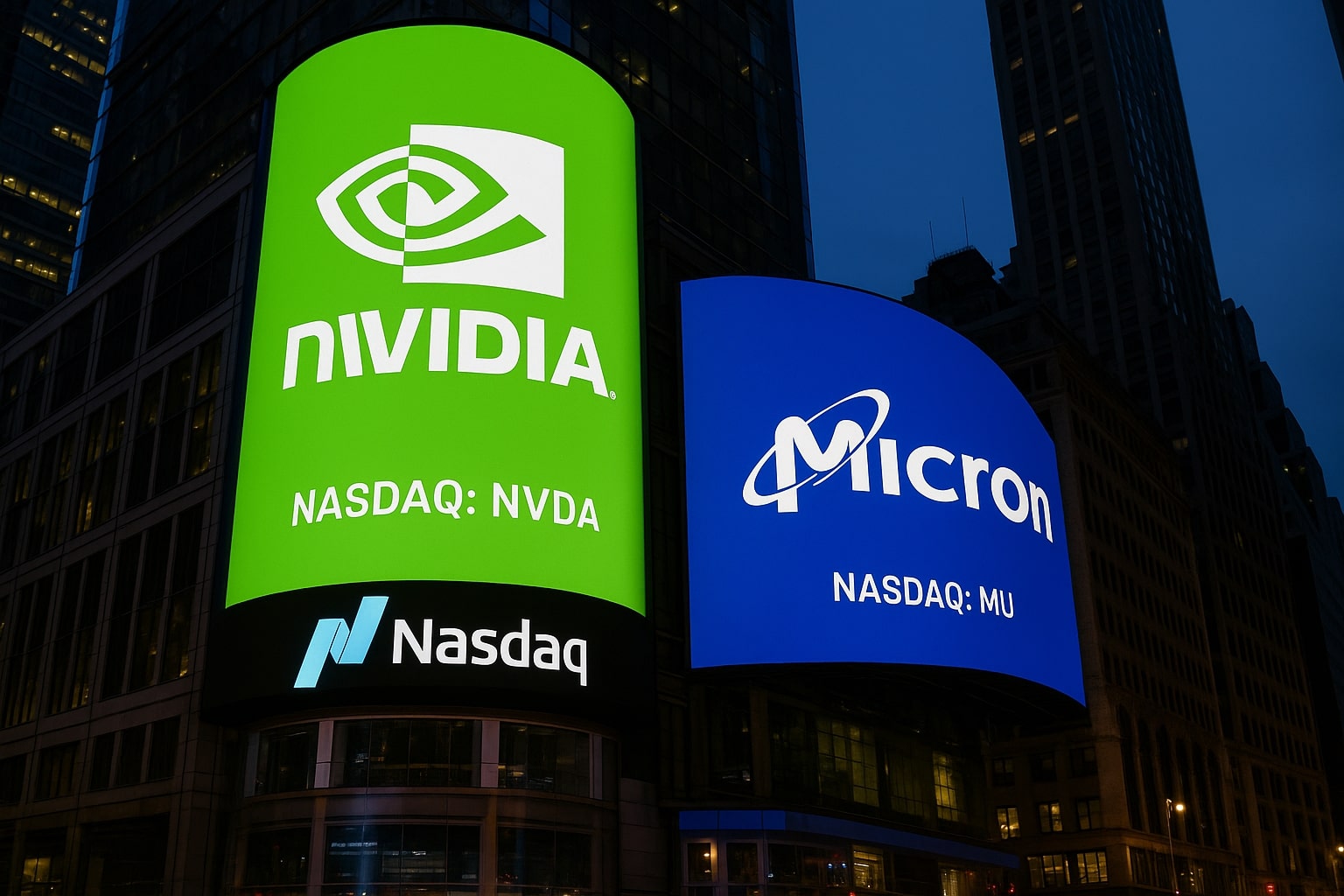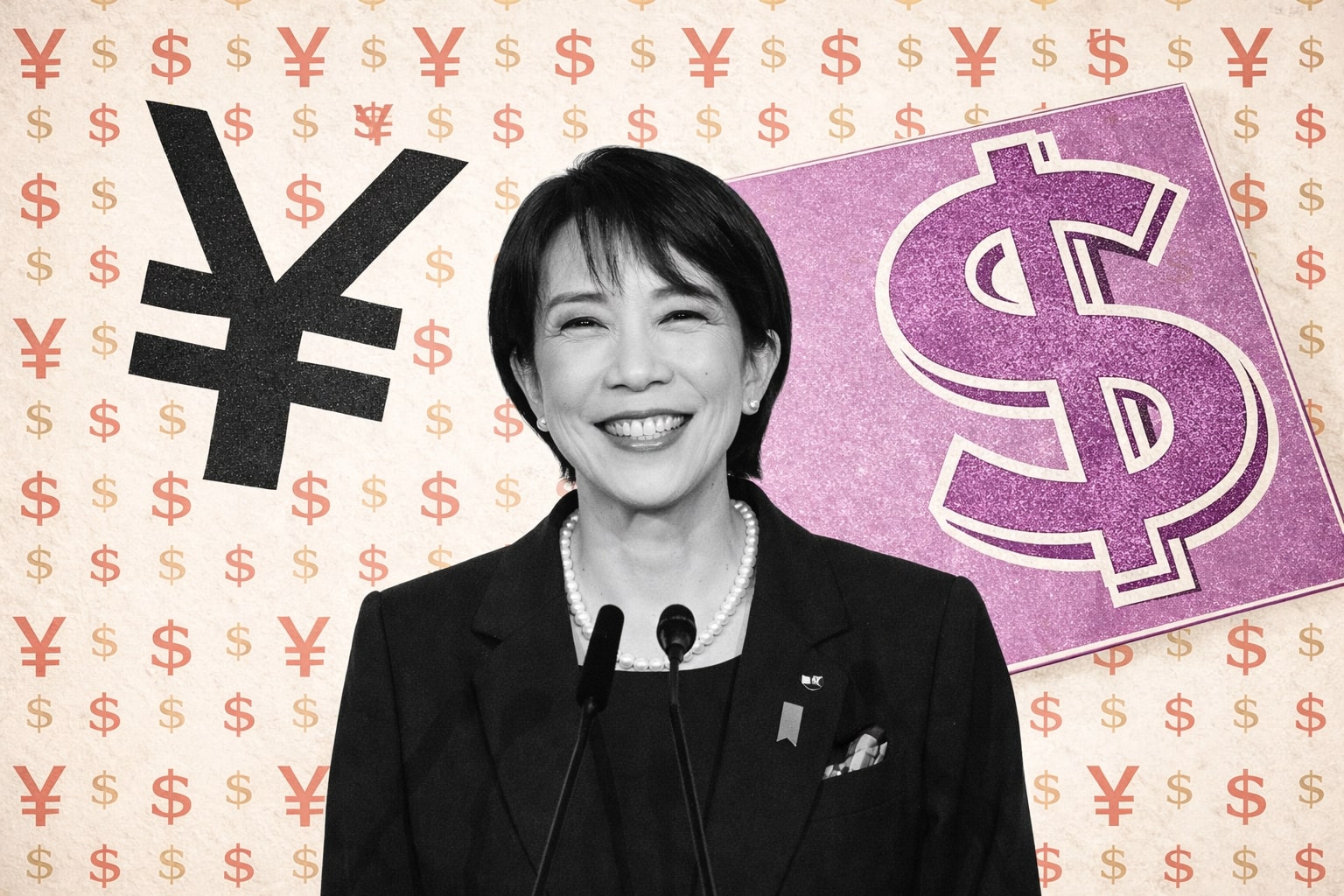
NVIDIA Stock vs Micron Stock: NASDAQ:NVDA at $174 Battles NASDAQ:MU at $119 for AI Market Leadership
NVIDIA dominates AI compute with CUDA and 73% margins, while Micron powers the memory backbone with DRAM and fully booked HBM capacity through 2025 | That's TradingNEWS
NVIDIA (NASDAQ:NVDA) vs Micron (NASDAQ:MU): AI Supremacy Versus Memory Leverage
Earnings Power and Growth Trajectories
NVIDIA (NASDAQ:NVDA) closed at $174.18, carrying a market cap of $4.24 trillion. Its latest quarter delivered $46.74 billion in revenue, up 55.6% YoY, and EPS of $1.05, growing 54.4% YoY. Net income over the trailing twelve months sits at $86.6 billion with an extraordinary 52.4% net margin and 60.8% operating margin, making NVIDIA one of the most profitable companies on the planet. Cash reserves stand at $56.7 billion against just $10.6 billion in debt, and return on equity is a staggering 109.4%.
Micron Technology (NASDAQ:MU), meanwhile, trades at $119.01 with a market cap of $133 billion. Its most recent quarter brought $9.3 billion in revenue and EPS of $1.91, up from $0.81 in the year-ago quarter. For the trailing twelve months, revenue reached $33.81 billion with net income of $6.22 billion, translating to an 18.4% net margin. Micron’s operating margin is 23.3%, far lower than NVIDIA’s, but its EPS growth of 467% YoY highlights its recovery cycle. Cash levels stand at $10.8 billion, with debt of $16.2 billion and a current ratio of 2.76, giving the company balance sheet resilience as it invests in High Bandwidth Memory (HBM).
AI Infrastructure Versus Memory Leadership
NVIDIA’s growth rests on data center acceleration. Its $41.1 billion data center revenue dominates the business, reflecting 90%+ CUDA market share, which locks hyperscalers, sovereign AI buyers, and enterprises into its ecosystem. The company’s forward guidance for Q3 revenue of $54 billion and gross margins of 73.5% underscore the scale of demand. Beyond GPUs, NVIDIA monetizes networking via NVLink and Spectrum-X Ethernet, with Blackwell and Rubin architectures poised to extend leadership.
Micron is structurally different. It does not own the compute ecosystem but instead sits at the center of AI infrastructure as a critical memory supplier. DRAM pricing resilience has lifted Q4 guidance to $11.1–$11.3 billion in revenue, gross margins of 43–44%, and EPS of $2.78–$2.92. More importantly, its HBM3E chips are fully sold out through 2025, reflecting hyperscaler demand. This segment offers premium pricing and margin expansion far beyond traditional DRAM, making Micron indispensable to NVIDIA, AMD, and other AI compute suppliers. As AI model parameters double nearly every year, Micron’s memory intensity per server guarantees structural demand.
Valuation Gap Between NASDAQ:NVDA and NASDAQ:MU
NVIDIA trades at a trailing P/E of 49.6x and forward P/E of 39.0x, while its EV/EBITDA ratio sits above 40x. Price-to-sales is 25.9x, a premium reflecting unmatched growth. Analyst targets range from $210–$236, with the bullish case built on AI infrastructure spend of $3–4 trillion by 2030.
Micron, by contrast, trades at a forward P/E of 9.07x and EV/EBITDA of 7.4x, more than a 50% discount to the semiconductor sector median of 14.8. Price-to-sales is 3.99x, only modestly above sector median. Analyst targets average $150.57, with the high end stretching to $200. The valuation gap highlights Micron as a cyclical value play with structural AI tailwinds, versus NVIDIA as a growth compounder priced at a premium.
China Risk Versus Cyclical Memory Risk
For NVIDIA, China remains a flashpoint. The inability to ship H20 GPUs cost the company $4 billion in Q2 revenue. While management has hinted at $2–$5 billion in possible Q3 shipments if restrictions ease, the U.S.–China rivalry poses constant headline risk. Yet, even with China uncertainty, NVIDIA’s sovereign AI pipeline is expected to exceed $20 billion in 2025, more than doubling YoY.
Micron faces different risks. NAND demand remains soft, pressured by Chinese suppliers and weaker automotive markets. The company has proactively adjusted NAND capacity to prevent inventory overhang. Unlike NVIDIA, Micron’s risk is more cyclical than geopolitical. Its exposure is tied to memory supply cycles, but the AI-driven HBM surge provides structural support that reduces the downside risk of past cycles.
Cash Generation and Capital Return
NVIDIA generated $77 billion in free cash flow in the last twelve months and has announced a $60 billion buyback program while keeping dividend yield at a token 0.02%. Its cash flow is sufficient to fund aggressive R&D while rewarding shareholders simultaneously. Institutional ownership is 69%, with insiders holding 4.3% of float. Insider activity has been dominated by programmed selling, not structural shifts.
Micron’s free cash flow is smaller, at $1.22 billion, but improving. Dividend payouts of $0.46 annually (0.39% yield) remain intact. Institutional ownership is 84%, with minimal insider ownership of 0.21%, though insider transactions show modest sales tied to compensation packages. The expectation is that Micron’s balance sheet will swing to a net cash position by 2026, opening room for future buybacks.
Outlook and Market Positioning
NVIDIA’s stock has surged 61% in the past 52 weeks, outperforming the S&P 500’s 16.8% gain, with a 52-week range of $86.62–$184.48. The company dominates AI compute, networking, and software, making it indispensable to global AI infrastructure.
Micron has gained 34% over the past year, with a 52-week range of $61.54–$129.85. Its positioning is leveraged to DRAM and HBM pricing cycles, but the AI era makes those cycles more sustainable. With DRAM pricing at multi-year highs and HBM fully booked, Micron enters a margin expansion cycle unseen in recent memory cycles.
Verdict: NVDA vs MU
Both NASDAQ:NVDA and NASDAQ:MU are integral to the AI ecosystem, but in very different ways. NVIDIA, at $174, commands a growth premium with margins above 70%, CUDA lock-in, and a balance sheet capable of $60 billion buybacks while still funding next-gen architectures like Rubin. It remains a BUY with near-term upside to $210–$236 and long-term optionality tied to $3–4 trillion AI capex.
Micron, at $119, offers cyclical upside leveraged to structural AI memory intensity. With forward P/E at 9x, margins rising to 44%, and HBM sold out through 2025, Micron trades at a significant discount despite being indispensable to NVIDIA’s accelerators. It is also a BUY, with upside toward $146–$150 near term and potential to reach $200 if HBM capacity expands as planned.
That's TradingNEWS
Read More
-
Robinhood Stock Price Forecast: HOOD at $115 After 200% Rally Faces Valuation Stress
02.01.2026 · TradingNEWS ArchiveStocks
-
XRP Price Forecast - XRP-USD Nears $2 as $1.80 Support and Shrinking Supply Point to $2.60 Target
02.01.2026 · TradingNEWS ArchiveCrypto
-
Natural Gas Price Forecast: NG=F Tests $3.50–$3.60 Floor Before LNG Wave
02.01.2026 · TradingNEWS ArchiveCommodities
-
Stock Market Today: Nasdaq Hits 23,467 as Nvidia (NVDA), Micron (MU) and Baidu (BIDU) Drive AI Surge
02.01.2026 · TradingNEWS ArchiveMarkets
-
USD/JPY Price Forecast - USDJPY=X Holds Near 157 as BoJ Caution and Fed Cut Bets Drive the Move
02.01.2026 · TradingNEWS ArchiveForex


















